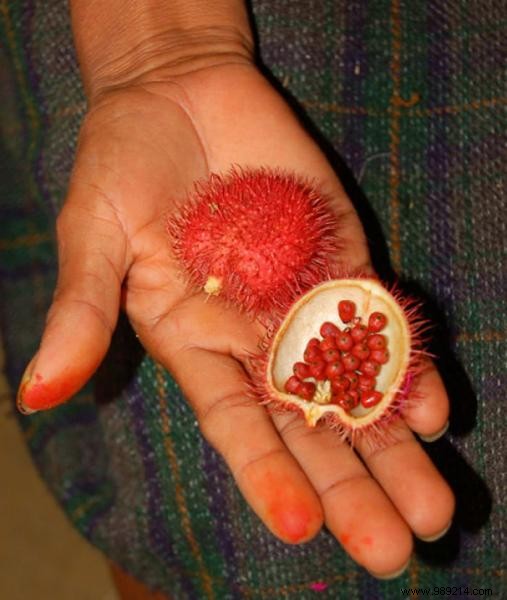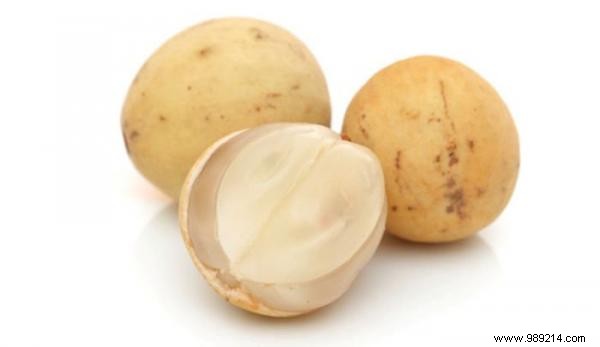
Do you know the salak, the Pandanus tectorius , or the jacoticaba? Probably not!
These are not names of extinct dinosaurs but simply those of incredible fruits.
Their flavor is probably unknown to you.
However, like the fruits that grow in our latitudes, they are full of vitamins and their benefits deserve to be known.

These exotic fruits with unknown names have surprising shapes and colors.
You will probably be amazed by the diversity of these fruits:further proof that nature is a magician!
The proof that there are not only apples, oranges or even bananas!
The biodiversity of your planet must make us proud and we must do everything to preserve it. Watch:

You will find this tree of the Moraceae family in Southeast Asia, Brazil and Haiti. Although it comes from India and Bangladesh, it is present today in all tropical regions.
The jackfruit or jackfruit or Artocarpus heterophyllus is nicknamed the ‘fruit of the poor’. Although it is closely related to breadfruit (Artocarpus altilis ) and that its fruits are also edible, they should not be confused.

Salak means "snake" in Javanese but also in Sudanese. It is undoubtedly the skin of the fruit composed of scales reminiscent of the skin of the snake which gives it this name. It is covered with hard, brown scales. Covered with thorns, the salak is a creeping palm that can reach 6 meters in height.
It is a fleshy fruit with white flesh, 5 to 8 cm long, with a small pit inside. You will find it in Java, Sumatra, Thailand, Malaysia, or even Indonesia, even if its origin is unknown.

The jaboticaba is a tree that comes from the region of Minas Gerais, in southeastern Brazil. It is also called guapuru. It is a small tree with black fruits that measures 3 to 4 cm in diameter. Each fruit contains one to four seeds. Its pulp is either white and sweet or pink and gelatinous.

The longan tree is a small tree about 20 meters high native to southeastern China. The longan or also called longani is its fruit. Longane is a name of Vietnamese origin (lung ngaan) which means:eye of the dragon.

The fruit of the hala is a magnificent fruit that measures about 20 cm in diameter. It is very popular in Micronesia where it is eaten cooked or raw:in this case, it is chewed for a long time or it is made into fruit juice. It also doubles as dental floss! Its leaves are used to flavor dishes. It grows on the "Utilized Pandanus ". It is also found in Hawaii and Australia.

Not sure that Buddha knows that his hands are actually an aromatic citrus fruit growing on a shrub with long thorny branches. The skin of Buddha's hands is very thick. It's slightly acidic, seedless, juiceless and almost...fleshless!
Moreover, the Japanese and the Chinese do not eat them but use it to perfume interior rooms or cupboards and the clothes they contain.

The durian is found throughout Southeast Asia but also in South America. It grows at the very top of an evergreen tree which is also called durian.
Oval in shape, quite big since it measures some 40 cm in length and weighs about 5 kg, it has a very particular characteristic:its pestilential smell!
Good to know:it is often banned in public places and transport in Asia because of its smell. Its taste is… special. But it is very popular in Asia. Its white flesh hides under a shell surmounted by thick spines.

A small tree from tropical America, the annatto is also found in Southeast Asia. It produces very beautiful red flowers and red fruits topped with thorns filled with red seeds.
As beautiful as it is, we do not eat this fruit. It is harvested to dry the seeds surrounded by a wax rich in carotenoids. It is made into an oil or food coloring.

It is also called the horned melon (or cucumber) probably because of these thorns that overcome the skin of this tropical fruit. Originally from Africa and Arabia, in Yemen, we enjoy its fruit.

The five-leaved akebia, covered with a bluish, waxy layer, grows in the temperate forests of eastern Asia. The flowers that bloom on this vine are beautiful. If it is original, its fruit, which ripens between September and October, is relatively tasteless.

Another magnificent fruit! Originally from West Africa, it is also called aki or blighia sapida. Looks like a lychee in an orange-red shell with large black seeds. It is grown in tropical regions. We eat its white flesh. But if it is not consumed when fully ripe, it becomes very toxic.

Rambutan is an amazing fruit! Its hull is covered with long red threads. It is from the same family as lychees, longans and quenettes. The taste of its sweet and sometimes not very juicy flesh is also close to lychee with a little grape flavor! It grows in Asia on a tree that is also called rambutan.

The combava is also called combawa, cumbava, cumbaba, makrut, combera lemon, or even kaffir lime! In short… whatever the name chosen, it is a citrus fruit native to Indonesia, in the Sunda archipelago in the Moluccan Sea. According to old sea maps, the name of his island of origin is “Sumbawa”. Hence its name!

It is also called the fruit of the gods or mongoose. If you are lucky enough to come across this fruit, treat it:it is one of the richest fruits in natural antioxidants (40 xanthones at least). It is used in Asia and Central Africa for its healing properties. But beyond that, its taste is very pleasant, between acid and sugar.
It is a small round fruit the size of a golf ball, whose white flesh is divided into 5 or 6 segments. Its skin (pericarp) is very thick. It is she who concentrates the natural antioxidants.

The pitaya is the dragon fruit, about ten cm for about 350 grams. It is also one of the most beautiful fruits on Earth. Its beautiful pink and green skin hides a white flesh dotted with small black seeds. Its delicate taste is somewhat reminiscent of kiwi.

The buriti or fruit of the Tarpaulin Palm (or aguaje) is in itself a vitamin cure! It contains up to 38 times more provitamin A than carrots and up to 31 times more vitamin E than avocado. Plus, it has as much vitamin C as an orange or a lemon!

The carambola which is also known as the Goan apple comes from Asia. But today its tree, the carambola, is found in South America, Australia, Israel and India.
The shape of this fruit and its appearance challenges us:slightly translucent, yellow, waxy. Its flesh is crunchy and acidic. It decorates your plates very pleasantly with its star shape and brings them freshness!

The langsat or duku is the symbol of Narathiwat province in Indonesia. Beneath its light skin is a large pit surrounded by translucent, sweet white flesh. It is popular in Southeast Asia.

Interestingly, it is also called the fruit ice cream. Originally from South America, cherimoya has white flesh and large black seeds. Its taste is reminiscent of apple cinnamon, beef heart and soursop.

This cousin of the cocoa tree is a large fruit with an elongated pod that can be up to 20 cm long and 10 in diameter.
The cupuaçu can weigh 1 to 2 kg. Its skin is brown and covered with down.